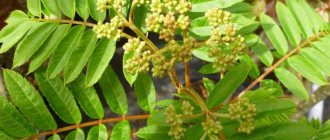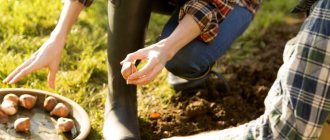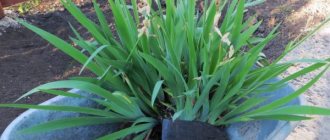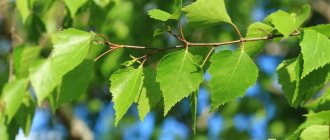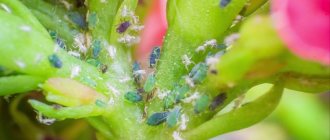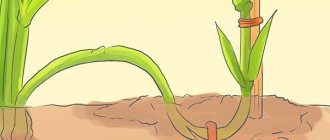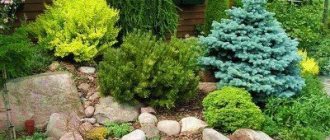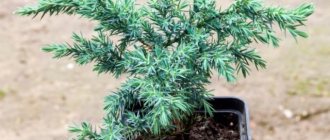Every year, countless different trees are planted, among which the most favorite is the beautiful white-trunked birch. Any summer resident, being in a garden center or at a market where tree seedlings are sold, is tormented about what to choose. But, having chosen a birch tree, he begins to think about where and how to plant it?
To do this, you need to know how to do everything correctly when moving a birch seedling from the forest or from another area, so that it can take root and grow normally. The answers to these questions can be found in this article.
Basic rules for replanting birch trees
Often, those who want to plant a birch tree on their plot create problems themselves, both during planting and when growing it in unsuitable conditions. To make this process go smoothly, you just need to adhere to the following simple rules:
- Select the desired type of birch;
- Choosing a suitable place for transplantation;
- We comply with all agricultural technology requirements;
- We carry out disease and pest control in a timely manner.
With proper care, the lifespan of a green white birch can reach 55 years.
Methods of growing birch
There are several ways to grow birch. To get a seedling, you can:
- grow it from a twig and a seed;
- find a seedling in the forest;
- purchase in specialized stores.
Treating the garden in the fall against pests and diseases
Each option has its pros and cons. If the plants are purchased in a store or nursery, then the owner will receive a already formed seedling that will be ready for planting and transportation. It will only be necessary to carefully deliver the future trees to the planting site and place them in the ground. And also in the nursery you can find specially bred breeds that will not grow too high. They are ideal for not too large areas.
It is advisable to purchase several species at once so that all trees are in the same age category. When purchasing seedlings using another method, it is also necessary to take into account some features.
Use of seeds
You can propagate a tree using seeds. Typically, birch trees grow in groves that absorb large amounts of moisture from the ground. This is why weeds or large trees cannot coexist with birch. This has a beneficial effect on the spread of seeds around their relatives.
Where to plant a birch tree
Before you start looking for a suitable place to transplant a seedling of the white-skinned beauty, it will not hurt to know that this tree is a very capricious species. It contains substances that, when released into the soil, become poisonous to other plants. Probably many have seen how beautiful a grove is where only birches grow, but they can rarely be found in a mixed forest, since they do not get along well with other trees.
Having a vegetable garden, the area of which is not large, there is no need to even dream of planting a birch tree. Only on large suburban plots can their owner afford to do this. A well-lit area will be a suitable place to transplant a young tree. Only there can a beautiful tree with long hanging branches grow. If the new place of residence is in the shade, the birch tree will grow tall and with a crown only at the top of the trunk, frail and depressed.
In natural places where birches grow, the soil is moist. This means that the new place of “residence” must correspond to the previous one, the leaves of the tree will be fully illuminated by the sun, and at the same time the soil will remain cool. It is best to plant a birch seedling on the eastern or northern side of the building, where shadow will always be present in the afternoon.
In addition to the fact that the place for transplantation must be with a certain temperature and soil moisture, you need to know some other important facts. You cannot plant a tree under electrical wires, because an adult birch tree reaches a height of up to 20 meters. And one more thing that is very important to know before planting a birch tree near your house. Its pollen is one of the most powerful allergens; this fact must be taken into account.
When is the best time to plant birch from the forest? How to plant and care for birch trees in autumn
Although birch is an unpretentious plant, the place for planting it must be chosen with special care - here you need to follow several mandatory requirements:
- If you are not going to limit yourself to one tree, but are planning to arrange a small alley on your site, calculate in advance the required area of the planting zone, taking into account the fact that there should be a distance of 4 m between the birches. The need for such gaps is explained simply: birches grow in size every year, so you need to have a reserve of space for their free growth.
- To prevent trees from being in the shade, maintain the required distance from all objects located on the site: from the house and outbuildings - about 5 m, from the fence - 3 m.
- Plant birch trees away from fruit-bearing trees: the latter take a lot of moisture from the soil, therefore making it practically unsuitable for the growth of other crops.
- Take into account the location of underground utilities: plant birch trees at a distance of 3 m or more from water supply, sewer and drainage pipes.
- If there is a sewer well or waste pit on the site, the seedlings should be 3-4 m away from the object.
Growing at home
It is easier to transplant a seedling properly grown from a cutting into the ground than one dug up in the forest. In this case, you will definitely not damage the root system and the probability of tree survival will increase significantly.
How much should you water it, you ask? After planting, it is necessary to water the seedling for 3-4 days.
Birch is a fairly frost-resistant tree, it lives for a long time, so even a short autumn will be enough for it to strengthen for the winter and no matter how many frosts there are in winter, it will survive everything.
Starting next spring, you can begin annual preventative care for birch. It is not much different from caring for other plants.
What trees to plant near the house (video)
Natural birch in itself is a very decorative and interesting plant, which can be widely used in the design of a personal garden and belongs to the category of trees popular among landscape designers. Among other things, such a plant serves as a source of medicinal raw materials and improves the microclimate in the summer cottage.
Everyone without exception knows the white-trunked beauty called birch, but few decide to plant such a tree on their own plot or in the yard, because they believe that it will no longer be possible to grow anything under an adult trunk. Is this really so, and when to plant a birch tree correctly is worth figuring out.
When to plant birch - in autumn or spring and how to do it correctly
Birch is always associated with something native, primordially Russian, which is why gardeners choose it for planting. In the middle zone you can often find a drooping or warty variety of tree. If you decide to plant a young beauty on your site, then choose the right seedling and prepare the soil for planting. Under comfortable conditions, the tree will quickly take root and begin to grow.
Some gardeners do not want to grow birch because of its highly developed root system. The roots take a lot of nutrients from the soil and all the moisture, so there is nothing left for other plants, and the crops die.
In fact, this problem can be easily solved if you maintain regular watering and timely fertilize the soil.
If you grow a dwarf birch tree on your plot, then other crops will not have a lack of nutrition, so they will grow calmly.
The first thing to consider when planting is the choice of seedling. Of course, you can dig up an already grown or mature tree in the forest, but every year it will become larger and larger, which means it will need a lot of space.
Not everyone has large plots of land, so in a small area it is better to plant a young tree up to 3 years old. Unlike adults, young seedlings are better at replanting and easily adapt to new soil.
The optimal time for planting is mid-autumn. The soil should not freeze at this time, otherwise the tree will die. Young trees can be planted in warm soil in the spring, after the snow has melted and been absorbed into the soil. Birch roots must be protected - usually a lump of earth is left on them. You cannot clean it off before planting, so bury the rhizome directly with it.
Select a place for the birch to the side, in a well-lit area and not in a lowland. There should be no other plantings within a radius of 4 m, otherwise the tree will crowd them out over time. Prepare the soil before planting. Birch is well accepted in porous, fertile soil with a neutral or slightly acidic index. Add mineral and organic fertilizers to the hole, since the tree is responsive to fertilizing.
Source: https://okwedding.ru/kogda-peresazhivat-berezu-iz-lesa-osenyu/
The best soil for planting
Birch is not at all picky about soil quality. In the case where you plan to transplant a seedling to a place with poor drainage or where there are frequent floods, it is best to purchase black birch, which can grow even on dry hummocks.
It is believed that when birch is transplanted, it has good survival rate on poor podzolic soils, as well as on solonetzes and chernozems, on sandy soil and loams. Slightly acidic soil is most suitable for the normal development and growth of seedlings, but it can also grow in alkaline soils. To make the soil more acidic, it is recommended to add soil taken from a coniferous forest or special chemicals.
Landing rules
Birch replanting must be carried out with great responsibility and skill. There are some rules regarding the location of the seedling relative to neighboring crops; they must be followed:
- The distance from the place where vegetables and garden plants are planted should be at least 8 meters. If this is a group planting of birch trees, limit the free space between them to 5 meters;
- It is better to plant trees in places on the northern side of the site so as not to shade other garden plantings;
- The distance between the birch tree and the walls of the building and underground communications should be 3 meters;
- Since birch has allergic effects, this must be taken into account when planting it if there is a person with allergies in the house.
- It is better to place the seedling in a place so that the future tree can cover the area from the prevailing winds in that region;
- Poor survival rate during transplantation is observed in adult birch trees. It is recommended to replant them in the fall when frost sets in or in winter so that a large lump of earth remains on the roots.
Three-year-old seedlings will be able to perfectly adapt to a new place, so that after a few years they will delight people with their beauty.
Choosing a suitable location
Birch is a fairly unpretentious tree, but you still need to choose the right place for planting in your summer cottage. It is worth considering certain points:
- The tree will grow in size every year. If all conditions suit it, it can grow up to 30 meters in height. The trunk diameter is usually 50 cm. This suggests that you should not plant several birch trees too closely with each other, since they will interfere not only with themselves, but also with nearby plantings.
- There is also no need to choose a landing site that is very close to various communications and buildings. To choose the right place, it is necessary to take into account certain requirements: there must be a distance of 5 meters between any buildings and the tree. You need to know exactly about all the underground communications that are located inside the yard. The tree must be located at least 3 meters from the nearest sewer, drainage or water supply. The ideal option is if the distance is even 5 meters.
- If tall trees “live” nearby, then birch should not be planted in this place.
- If there is a desire to create an alley and a kind of hedge, then all seedlings should be located at a distance of 4 meters from each other.
It is worth knowing that birch will not get along very well near trees that require frequent watering. This is explained by the fact that during the growth process the soil will become unsuitable for the comfortable growth of shrubs or other trees. The birch tree will take a large amount of moisture from the ground.
It would be best if you plant some kind of lawn grass near the plant, which will create an additional design for the area. It is advisable to choose the eastern side of the site for planting birch. In this case, the necessary balance of shadow and light will be maintained throughout the day.
Landing
A few days before planting, you need to prepare a planting hole. Its size should correspond to the size of the root system of the seedling along with the lump of earth. Then add a few centimeters to the calculation for normal placement of the seedling.
First you need to fill the dug hole with a drainage layer, this can be broken brick or gravel. Then fill one third of the hole with a mixture consisting of leaf soil, humus and 150 grams of complex fertilizer. To make the soil the same as it was in the natural habitat of the purchased birch seedling, you can also add soil from a coniferous forest or pine sawdust.
You need to hammer a peg into the corner of the dug planting hole. Before planting, it is recommended to dip the roots of the plant in a mash made of clay and water (our grandfathers did this). And after that, place the tree in a permanent place, after pouring a bucket of water into the hole. After this, slowly begin to add soil from all sides of the hole, while trampling it down, starting from the edge and moving towards the middle.
At the end of this work, the seedling should be attached to the peg with a rope and immediately watered. And also, which is very important, the root collar should not be buried. This is explained by the fact that if it is even a little below the soil level, the mycorrhiza (fungi) on the roots of the plant will die, without which the growth of the birch will begin to deteriorate, and ultimately it will disappear.
Experienced gardeners believe that it is necessary to replant the birch tree in the spring; it will be able to stock up on the necessary amount of nutrients for wintering. Late autumn is an excellent time to transplant - when the air temperature is below +10 degrees. Agrotechnical work carried out in autumn corresponds to spring planting.
The main thing you need to remember is that birch trees need to be planted with their roots covered. If purchased from a nursery or shopping center, the roots will be in a container. But when it is necessary to deliver it from the forest, the tree should have a large lump of its native soil.
Birch: planting and care in open ground
It is better to plant in places where there is slight shade, as the tree loves moisture. The presence of partial shade contributes to less evaporation and retention of moisture in the soil. At the same time, there must be sufficient lighting.
After we have decided on the location, we make a hole in the soil so that the root collar of the plant is close to the surface of the earth. If you do not take this point into account, the birch tree may die. An adult tree does not like having its roots covered with soil.
Slightly acidic, loose humus is ideal as soil. The use of fertilizers in the form of a mixture of soil and humus during planting is encouraged. Evening time is best for the tree to take root.
In the first days after planting, the seedling should be covered with branches from the sun. The first 4 days the tree needs abundant watering. You need to ensure that the soil remains moist at all times. In subsequent days, watering is carried out as necessary.
Care
Birch is an unpretentious tree. Caring for her will not take much time, it is minimal. Watering will only be needed after replanting and during drought.
You can feed the plant in early spring, before the first leaves appear, as well as in the last days of spring. The irrigation solution is as follows: bucket of water, 1 kg. mullein, urea 10g, ammonium nitrate 15g. For one birch tree 10–20 years old you need to pour three ten-liter buckets of this fertilizer, after thirty years - five such buckets.
Care includes weeding and loosening the soil to a depth of at least 3cm. It will also be necessary to mulch the tree trunk circles with wood chips or peat.
Trimming
Agronomists note that birch trees are not pruned, otherwise the structure of the crown may be damaged. The tree does not tolerate this process well; no more than a quarter of the branches can be cut out per season.
The seedlings do not require aesthetic intervention. You can only regularly carry out sanitary pruning, removing dried branches. When caring for trees that no longer produce growth, you need to rejuvenate them by removing bulky branches. Such pruning is allowed only in autumn and winter, that is, during the dormant period for birch.
Diseases and pests of birch, protection against them
Birch has many pests, the most dangerous of which are the cockchafer and the gypsy moth. The beetles damage leaves and shoots, and their larvae damage the roots. You can combat them by timely removal of damaged leaves and subsequent burning. It is also recommended to dig around the trunks. The soil can be treated with chemicals.
Silkworm caterpillars eat the leaves, leaving only the veins behind. If this pest is detected, you should immediately begin to fight it. To do this, the caterpillars need to be shaken off and the tree sprayed with one of the appropriate insecticides.
For birch trees, fungi - tinder fungi, which can greatly destroy the wood, pose a great danger. It is necessary to get rid of them in time. Rust can be combated by spraying the tree with fungicides.

